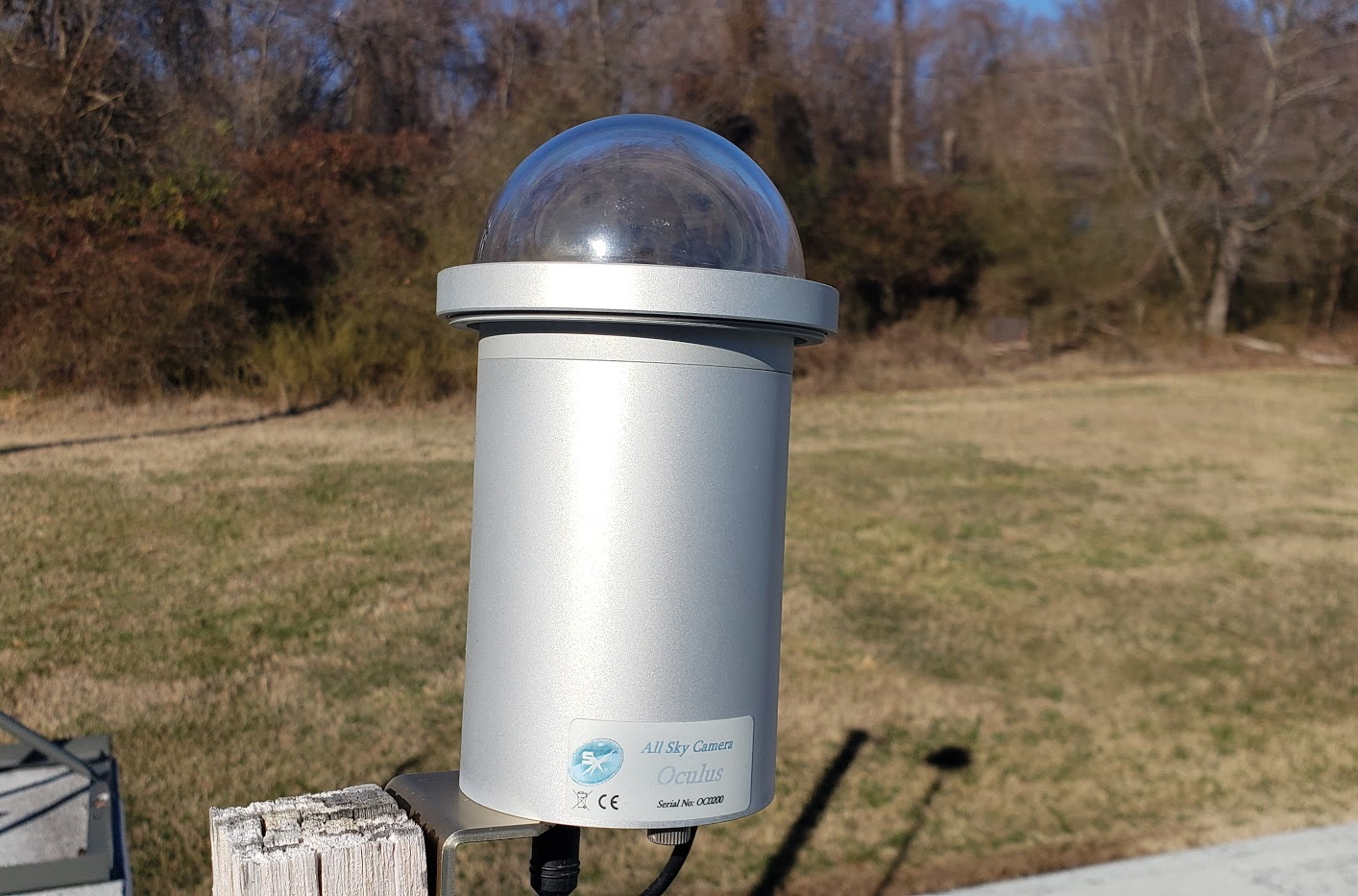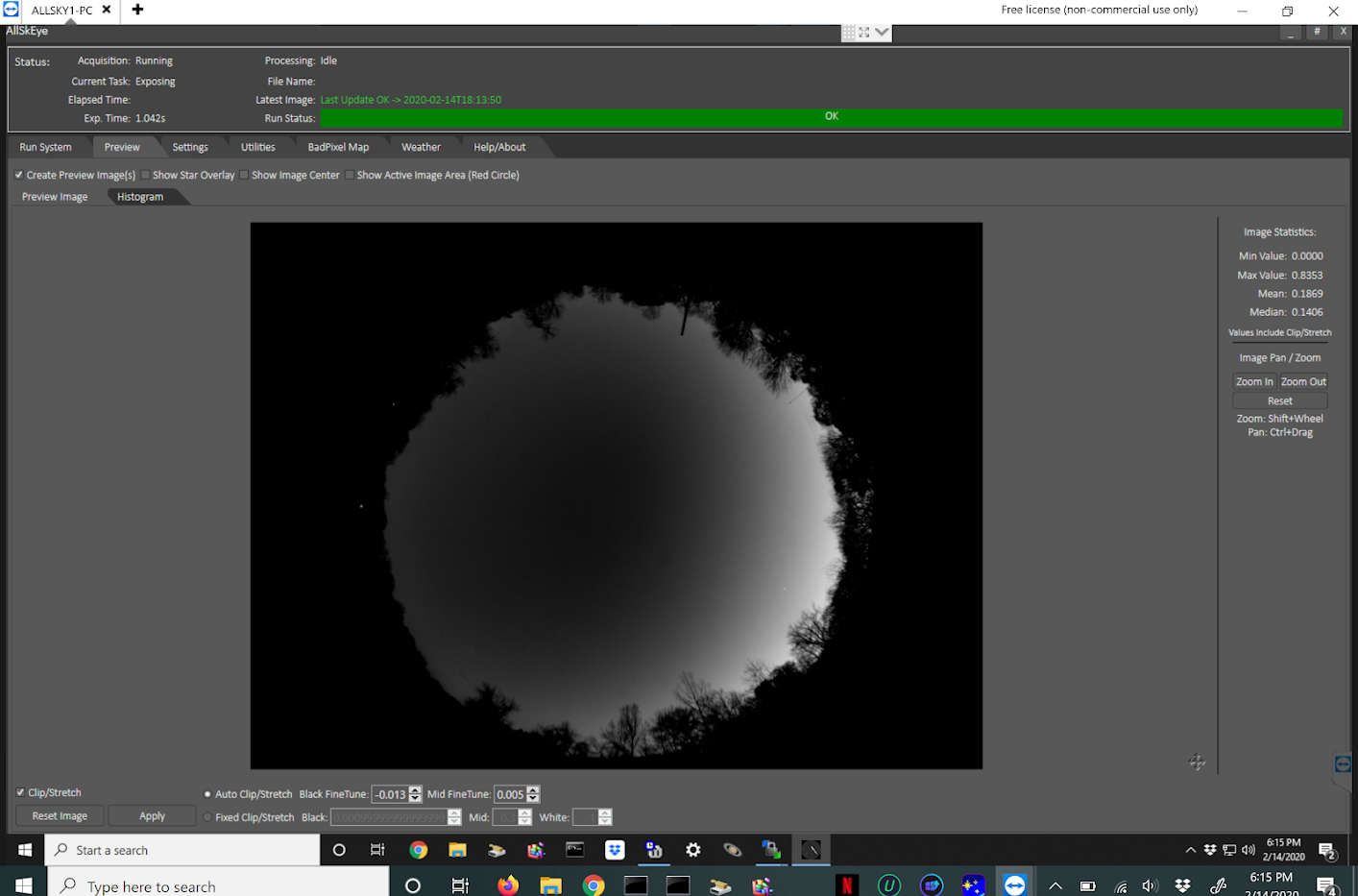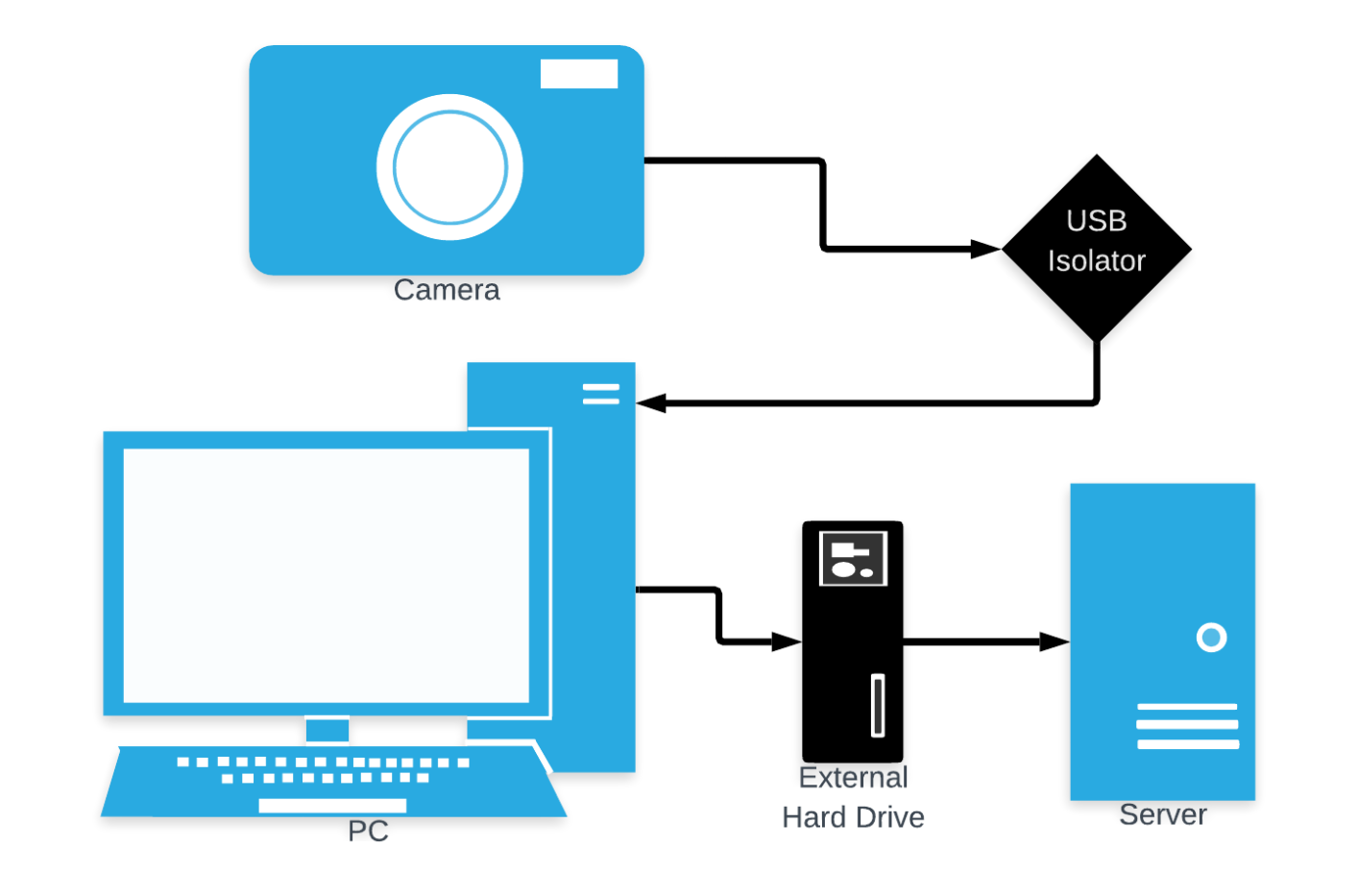Technical info
MASN Hardware
The Maryland All-Sky Network uses the Starlight Xpress Oculus all-sky
camera. The monochrome camera has the ICX205AL Sony SuperHAD interline
CCD chip with 1392 x 1040 pixels that are 4.65µm x 4.65µm in size. The
camera is USB powered with a separate dewheater (definitely needed here
in MD). The lens is a 1.55mm f2 180 degree 'Fish-Eye' under a 3"
polycarbonate dome. The entire unit is about 15cm tall and 9.5 cm wide.
The domes last about 3 years.
The USB cable from the camera is not long enough to reach to the control
computer, so we have a 15' extension that is plugged into a USB isolator
before the computer. The computer is a Dell OptiPlex 9020 Minitower
currently running Win 10 Pro.
More specs:
15' USB extension |
USB Isolator |
StarlightXpress Oculus Models
- CCD type: ICX205AL Sony SuperHAD interline CCD with low dark current and vertical antiblooming.
- CCD Pixel size: 4.65 um x 4.65 um
- Image format: 1392 x 1040 pixels
MASN Software
Although the Starlight Xpress Oculus came with proprietary software, it was somewhat difficult to use remotely and required a great deal of daily work. The first students to work on the project were tasked with trying to write better camera control software. We didn't get very far as we had to first understand the camera SDK. In our second year of working on the project, we learned about AllSkEye, written by Michael Poelzl. He also had an Oculus camera and had similar difficulties. He was a more experienced coder and got a program written before we did. Rather than recreating the wheel, we started using his program to control our camera. He has continued to make improvements in the software, even expanding it to control other all-sky cameras. With a good camera control program now in place, we decided to have students focus on meteor detection algorithms instead. So over the past several years, students have been learning Python and then trying to expand on the previous year's work. Their work is in a GitHub repository. During the current year (2019-2020) the student focused on building this website to showcase the camera data.
Updated: 19-Oct-2022


